Kenda Parker DT Tires
Company: Kenda
Price: $79.99 to $113.99
Additional Pricing
- 80/100-21 - $77.99
- 110/100-18 - $110.99
- 120/100-18 - $112.99
- 110/90-19 - $109.99
- 120/90-19 - $113.99
- A hard terrain tire that does not suffer too much in other conditions.
- Excellent performance under braking.
- Durability ranks among the best in long wearing tires.
- Front tire wears funny, actually mushrooming the knobbies.
- Slightly heavier than lesser ply tires.
What it is
- Long lasting hard terrain tire that is DOT-approved.
Kenda’s Parker DT is a DOT-approved knobby designed for hard to intermediate soil conditions and a long life. The tread pattern has been around for a while, named the “Carlsbad” before going to a 6-Ply rated casing offers a claimed 30% more cut resistance. It also received a new natural rubber compound in its development time in Baja to help with durability and knob chunking.
How it works
- An interesting tread pattern especially on the front tire.
- Directional tires that we preferred in the HARD direction.
- Even though the durability is high, the performance does not suffer.
The tread pattern of the Parker is interesting to say the least, especially the front with its heart shaped center row. Both tires are directional for either hard or intermediate soil conditions. Mounting was straight forward and not that difficult considering this is a six-ply tire. It has a very positive bead seating so it is obvious to see when the tires are seated on the rim. Weight wise they are just a little bit heavier than motocross tires, more so in the rear.
The tires have different performance depending on the direction. We always preferred the HARD direction all the time for a number of reasons. In INTERMEDIATE direction on intermediate is a condition that almost every tire works excellent. But if the conditions change to hard the tire does not grip as well on the loose marble soil as well as the HARD direction—yet the hard will grip just fine in intermediate soil. This is true for both front and rear tires.
The tracking is a bit better in the INTERMEDIATE in soft conditions, not enough to outshine the standout feature of this tire. Under braking in the HARD direction, the Parker is the best gripping tire we’ve ever used. The front bites and grabs what feels like extra grip and it tracks so straight that it seems to center the steering as opposed to washing out like a lot of tires will.
Out back the rear also grabs well, but again it stays in line and tracks straight with predictability under braking. We always ran near 12 PSI and found you could get away with less without too much fear of flats on the rear, and up to 15 without losing traction. The front is pretty particular about the pressure, especially in aggressive turning, you can fell a pound or two of difference. The weight of the bike makes the exact pressure different for different machines.
In turning, the front is very predictable and the harder the conditions the better its grip is in relation to other tires. It may not offer the outright best grip bit its feel is very consistent. As the conditions go to softer the performance never really deteriorates to a point where you feel like you should be on another tire, which is really odd for a specific hard terrain front tire. The rear just spins up a little easier but the spinning performance is again predictable.
Another area where the Parker shines is durability. It lasts as long as the known long-life tires but always has better grip, especially when brand new. The performance drops off less than expected and with about 1/3 of the life out of the tire the wear really slows. We were able to get over 1500-miles in a set in desert conditions with a fair amount of hard riding involved. The picture with multiple wheels shows wear at different stages during the rear tire's life, approximately 100-miles, 300-miles, 500-miles and then 1500-plus miles where near 1000-miles it seemed the tire quit wearing down as much as it lost most of its performance in a straight line.
Chunking of the rear is minimal in rocky conditions. The front actually has a funny wear pattern where the knobs actually appear as if they mushroom on the tops. It looks bad but the performance stays, especially on the brakes. Another good thing about the stiffer carcass is that it stays stiff and does not wear out before the knobs do.
On the street the Parker works about ad good as any true knobby could be expected to, which means watch out in the turns and when hard on the brakes. The front wanders on grooved pavement but in reality the street isn't even worth considering, though the tires did not wear aggressively on road.
Overall the Parker DT is a surprising tire that many will like, especially if you are a rider who likes to feel confident on the brakes and getting high-mileage from a tire. The added bonus is that the tire is DOT-approved so you can feel confident that it is legal for your license plate carrying dirt bike.
Help support this site by purchasing through this link:
Leave a Reply
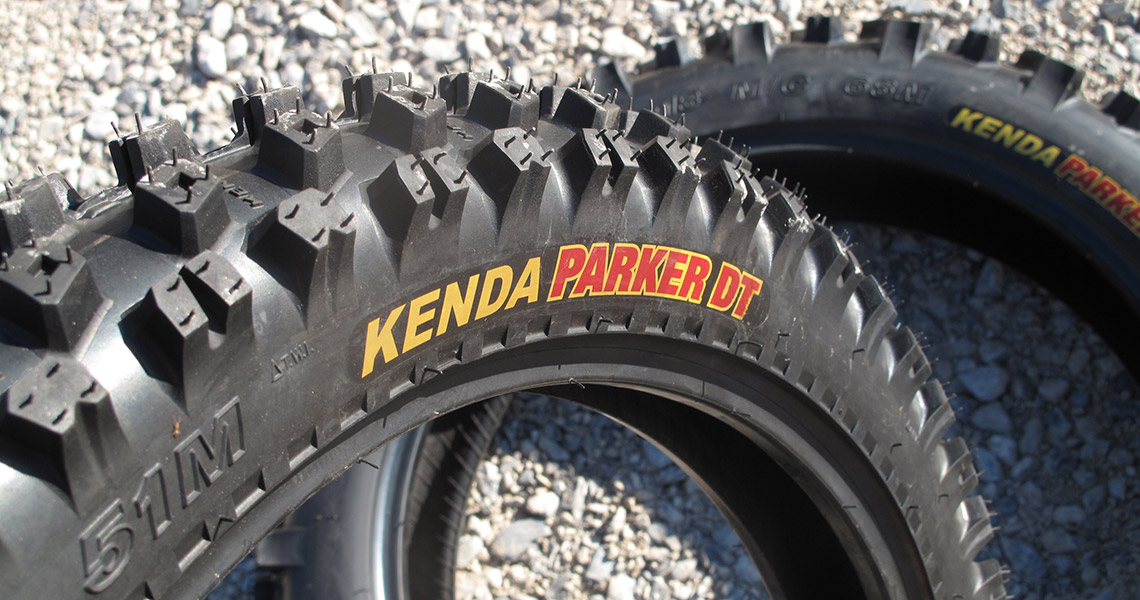
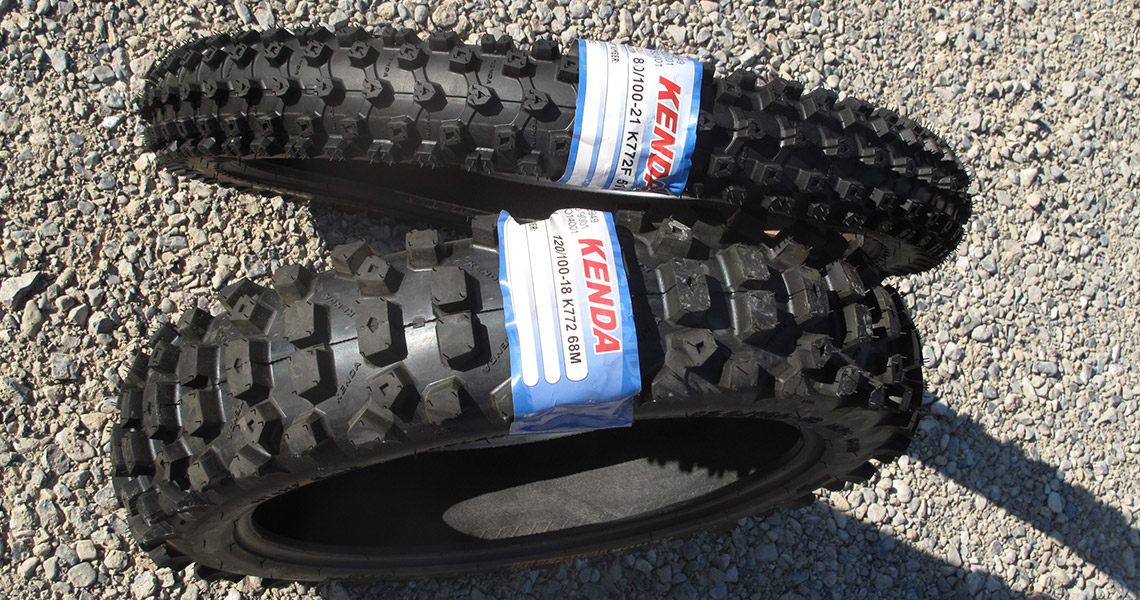

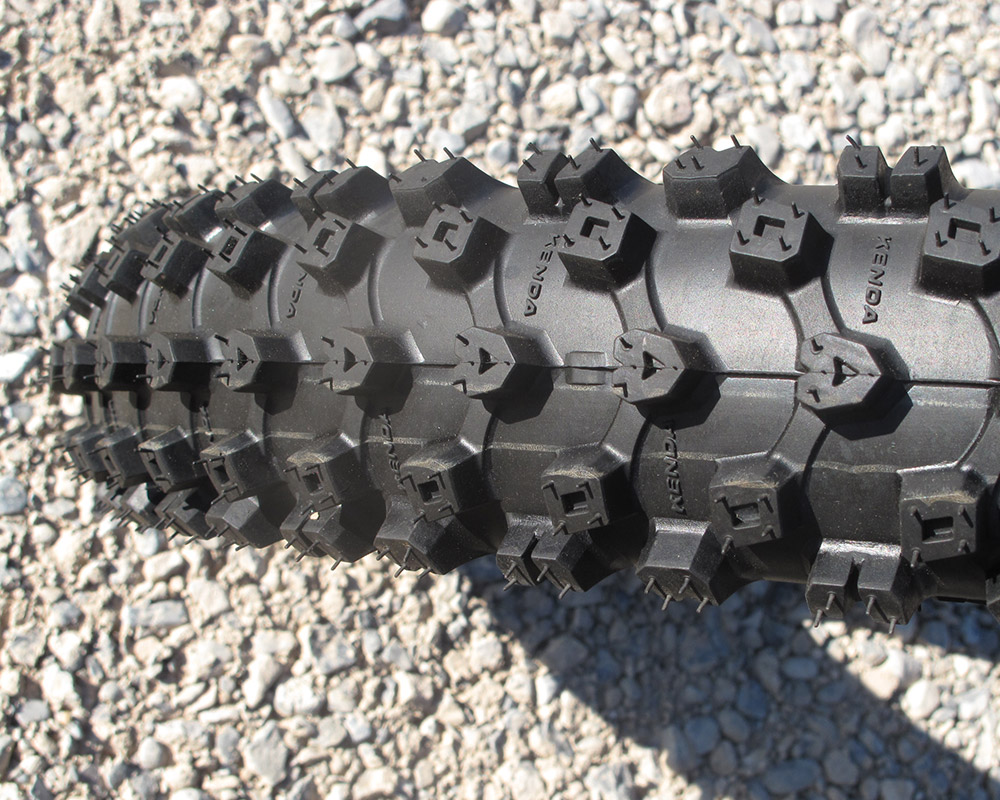
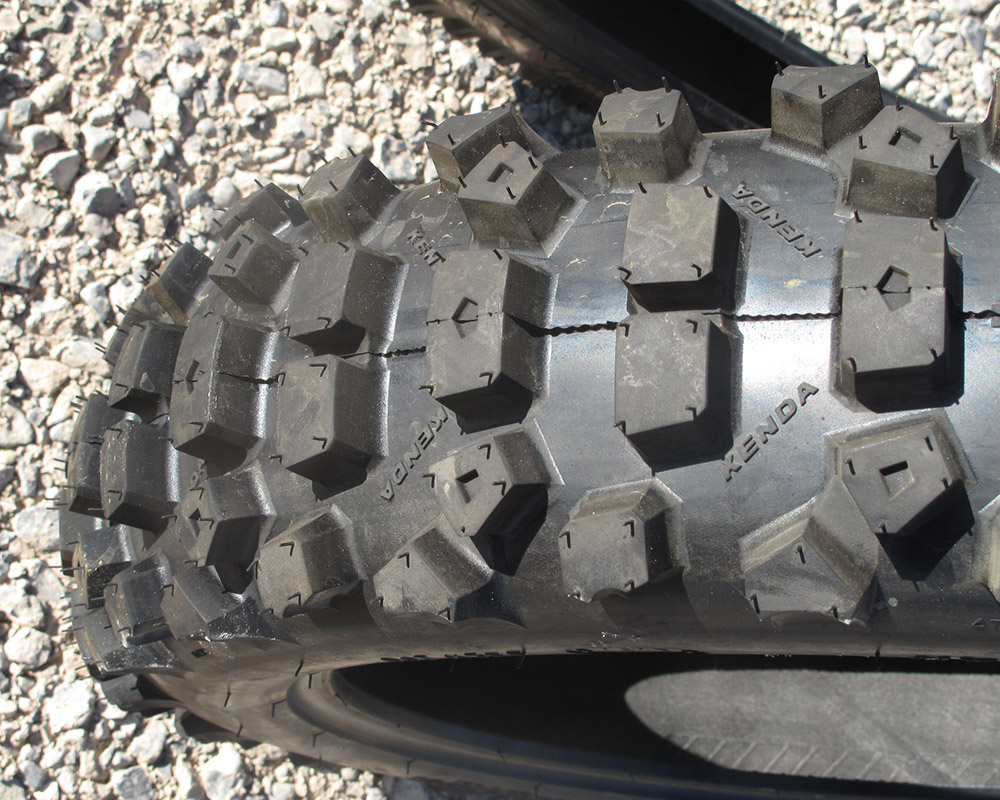
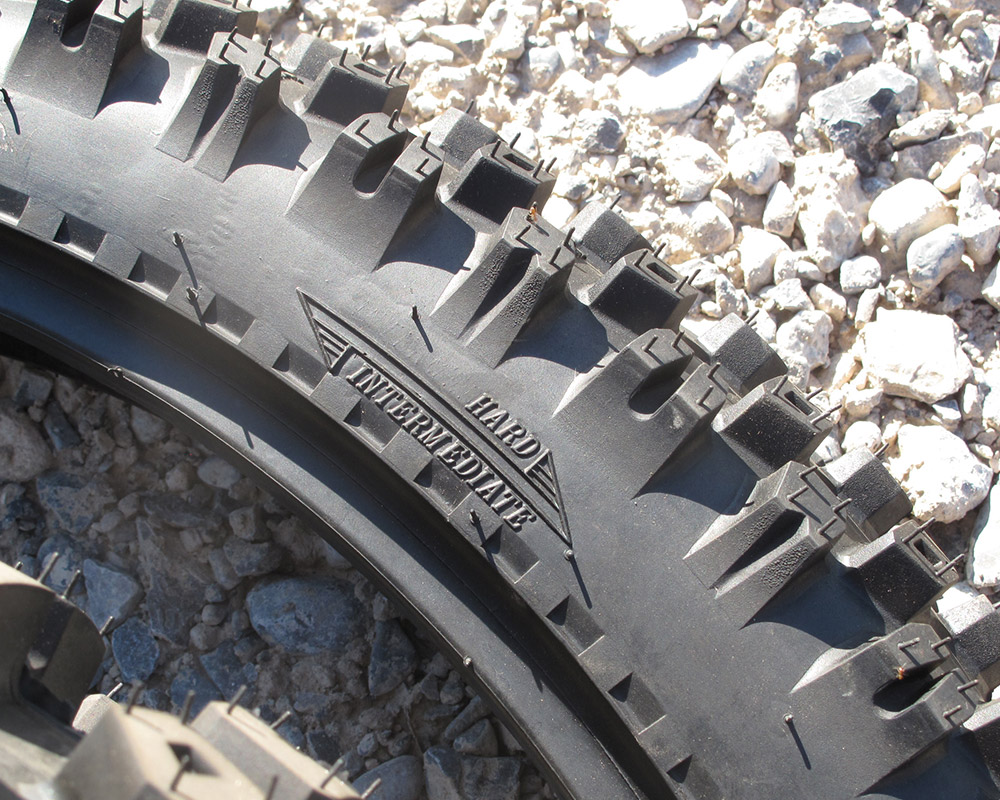
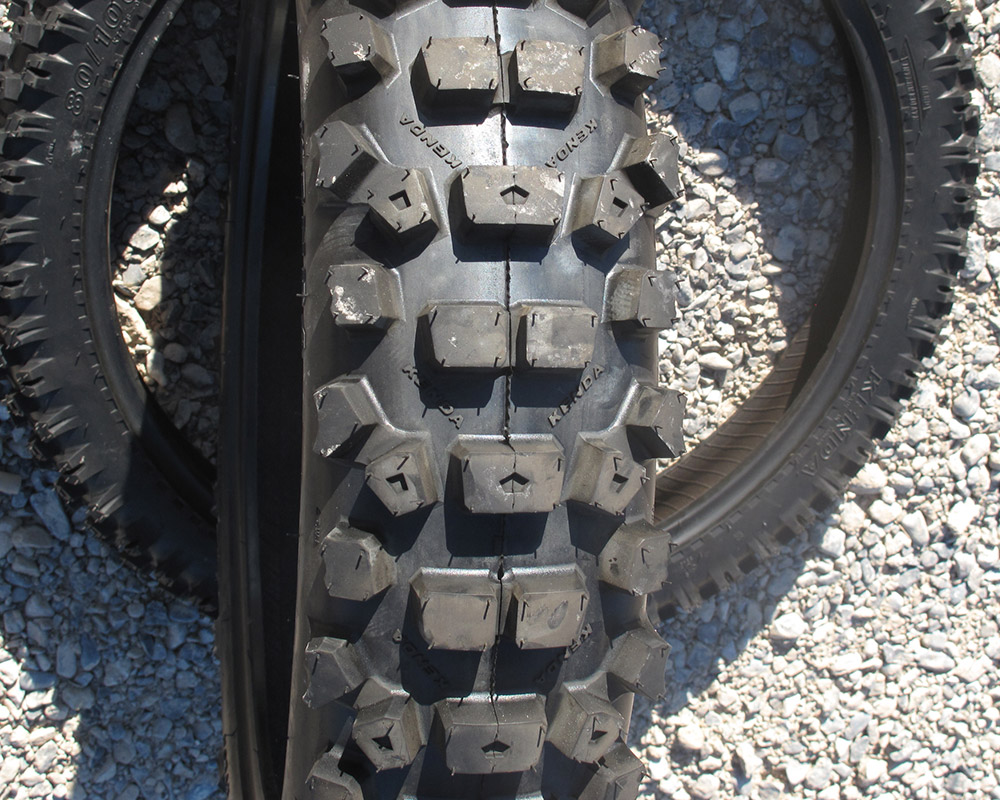
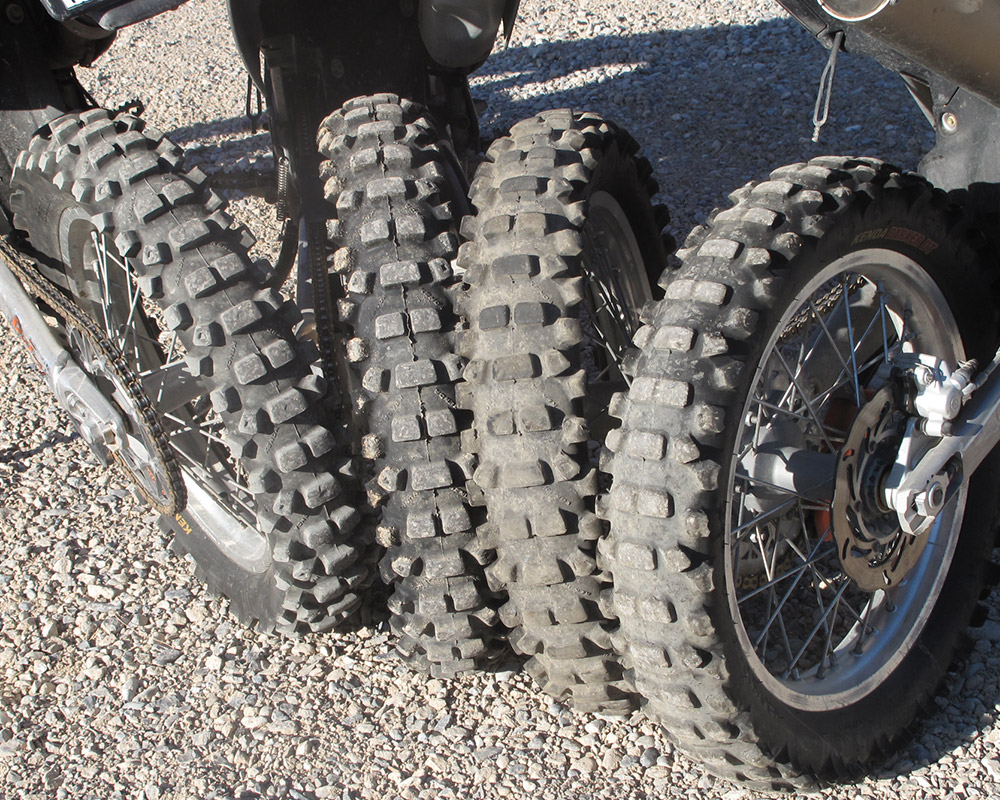



3 Responses to “Kenda Parker DT Tires”
Garry Cassidy
I was recently told these tires are being discontinued. Can you confirm?
Jimmy Lewis
No, they are still available. Just click on the link above (or bottom of the test) and you can get them through Chaparral.
Jimmy Lewis
I know the sticker on the side changed but I’m not aware of any other changes but I will look into it.